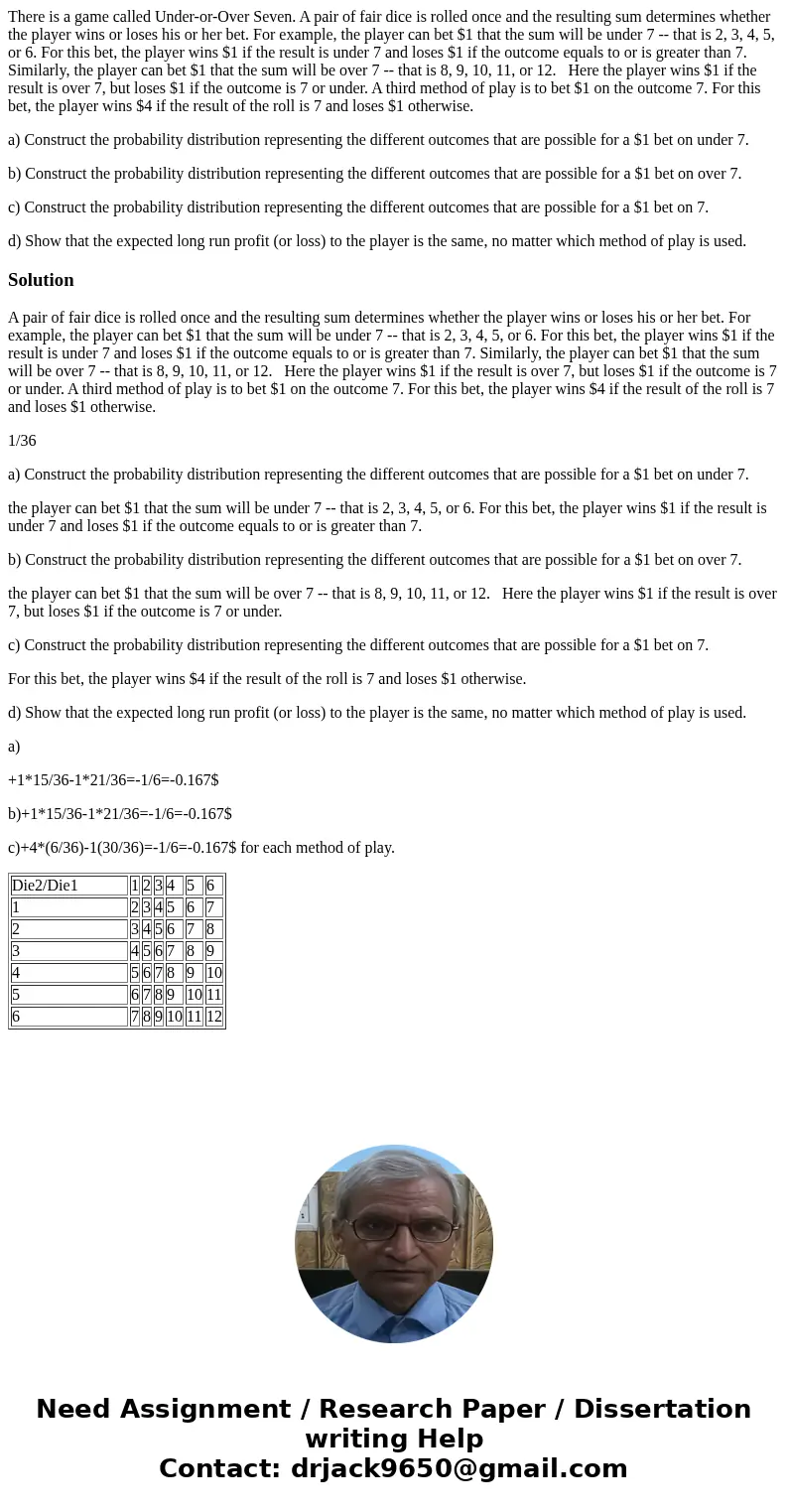There is a game called UnderorOver Seven A pair of fair dice
There is a game called Under-or-Over Seven. A pair of fair dice is rolled once and the resulting sum determines whether the player wins or loses his or her bet. For example, the player can bet $1 that the sum will be under 7 -- that is 2, 3, 4, 5, or 6. For this bet, the player wins $1 if the result is under 7 and loses $1 if the outcome equals to or is greater than 7. Similarly, the player can bet $1 that the sum will be over 7 -- that is 8, 9, 10, 11, or 12. Here the player wins $1 if the result is over 7, but loses $1 if the outcome is 7 or under. A third method of play is to bet $1 on the outcome 7. For this bet, the player wins $4 if the result of the roll is 7 and loses $1 otherwise.
a) Construct the probability distribution representing the different outcomes that are possible for a $1 bet on under 7.
b) Construct the probability distribution representing the different outcomes that are possible for a $1 bet on over 7.
c) Construct the probability distribution representing the different outcomes that are possible for a $1 bet on 7.
d) Show that the expected long run profit (or loss) to the player is the same, no matter which method of play is used.
Solution
A pair of fair dice is rolled once and the resulting sum determines whether the player wins or loses his or her bet. For example, the player can bet $1 that the sum will be under 7 -- that is 2, 3, 4, 5, or 6. For this bet, the player wins $1 if the result is under 7 and loses $1 if the outcome equals to or is greater than 7. Similarly, the player can bet $1 that the sum will be over 7 -- that is 8, 9, 10, 11, or 12. Here the player wins $1 if the result is over 7, but loses $1 if the outcome is 7 or under. A third method of play is to bet $1 on the outcome 7. For this bet, the player wins $4 if the result of the roll is 7 and loses $1 otherwise.
1/36
a) Construct the probability distribution representing the different outcomes that are possible for a $1 bet on under 7.
the player can bet $1 that the sum will be under 7 -- that is 2, 3, 4, 5, or 6. For this bet, the player wins $1 if the result is under 7 and loses $1 if the outcome equals to or is greater than 7.
b) Construct the probability distribution representing the different outcomes that are possible for a $1 bet on over 7.
the player can bet $1 that the sum will be over 7 -- that is 8, 9, 10, 11, or 12. Here the player wins $1 if the result is over 7, but loses $1 if the outcome is 7 or under.
c) Construct the probability distribution representing the different outcomes that are possible for a $1 bet on 7.
For this bet, the player wins $4 if the result of the roll is 7 and loses $1 otherwise.
d) Show that the expected long run profit (or loss) to the player is the same, no matter which method of play is used.
a)
+1*15/36-1*21/36=-1/6=-0.167$
b)+1*15/36-1*21/36=-1/6=-0.167$
c)+4*(6/36)-1(30/36)=-1/6=-0.167$ for each method of play.
| Die2/Die1 | 1 | 2 | 3 | 4 | 5 | 6 |
| 1 | 2 | 3 | 4 | 5 | 6 | 7 |
| 2 | 3 | 4 | 5 | 6 | 7 | 8 |
| 3 | 4 | 5 | 6 | 7 | 8 | 9 |
| 4 | 5 | 6 | 7 | 8 | 9 | 10 |
| 5 | 6 | 7 | 8 | 9 | 10 | 11 |
| 6 | 7 | 8 | 9 | 10 | 11 | 12 |

 Homework Sourse
Homework Sourse